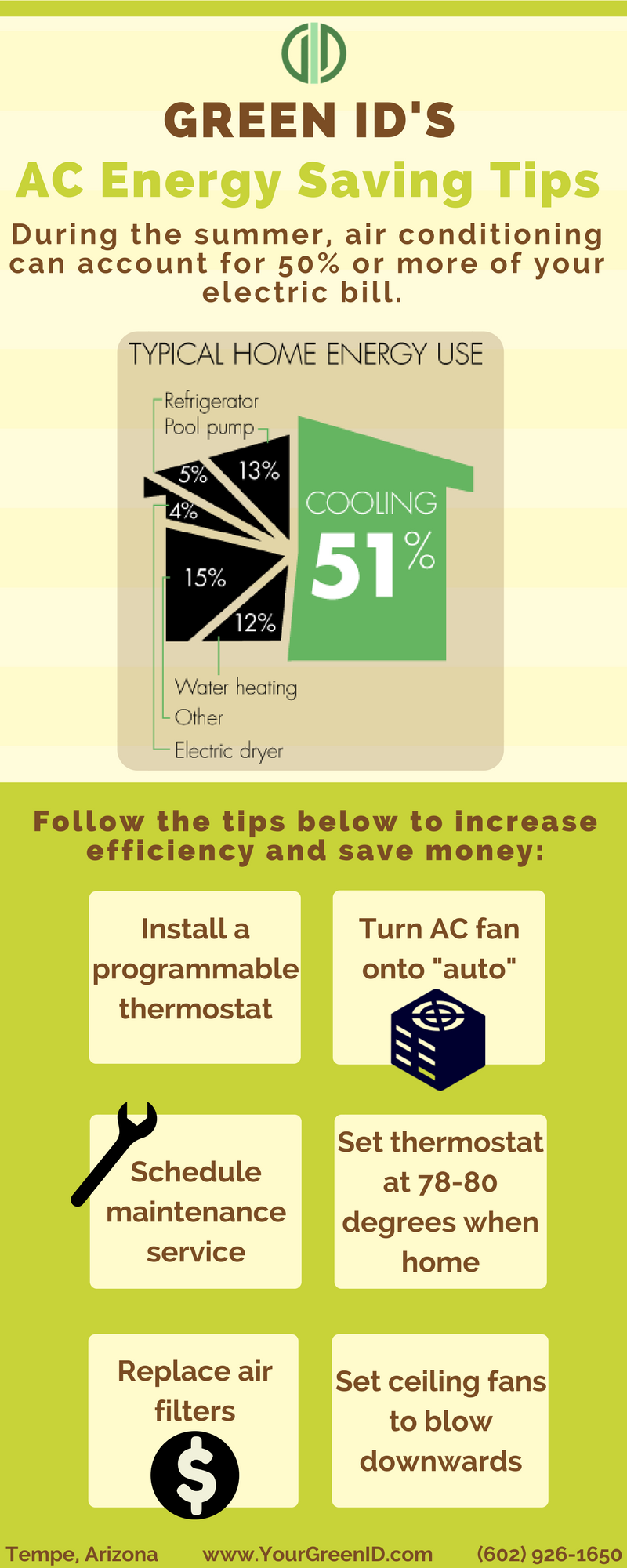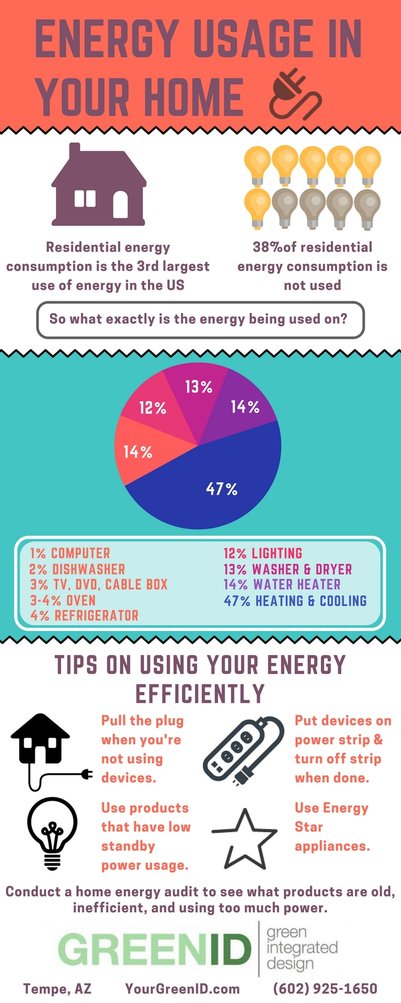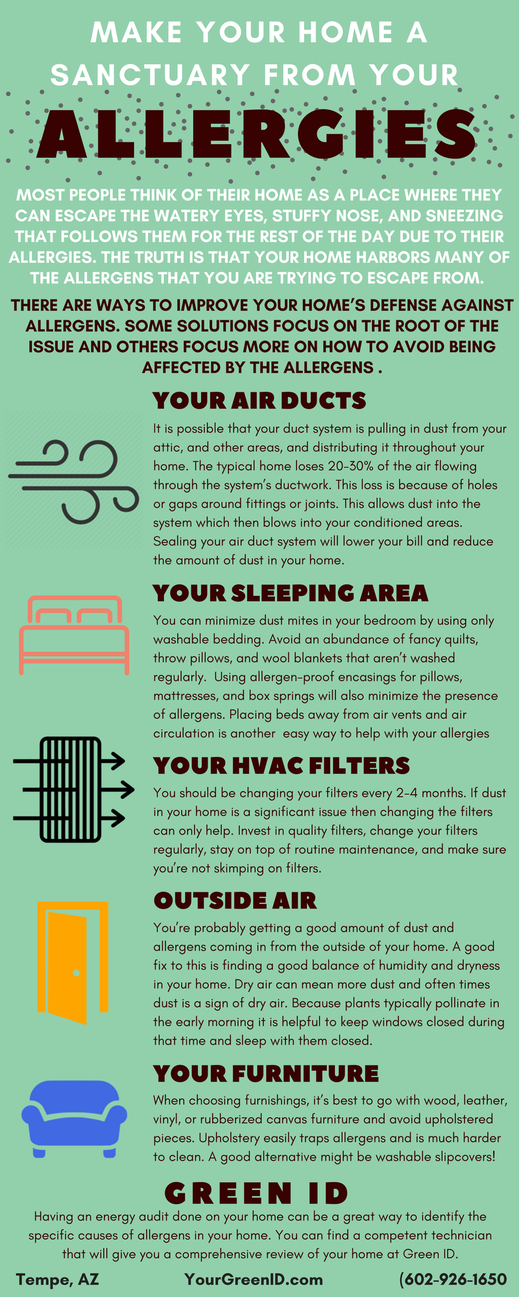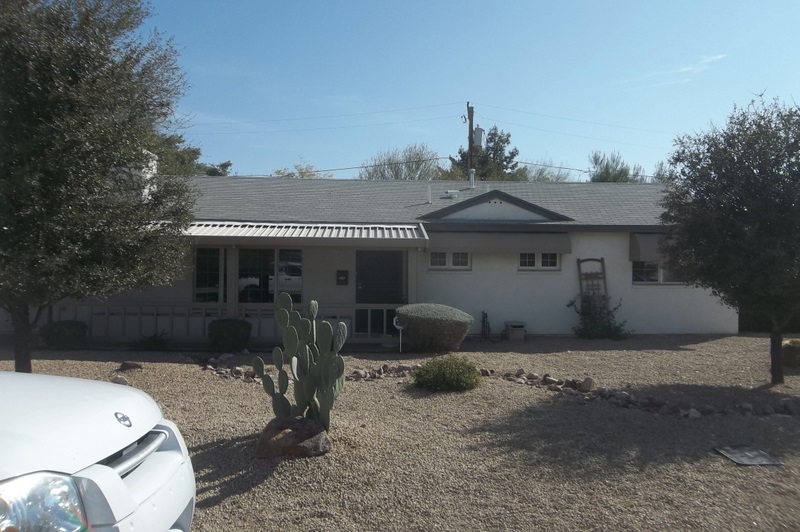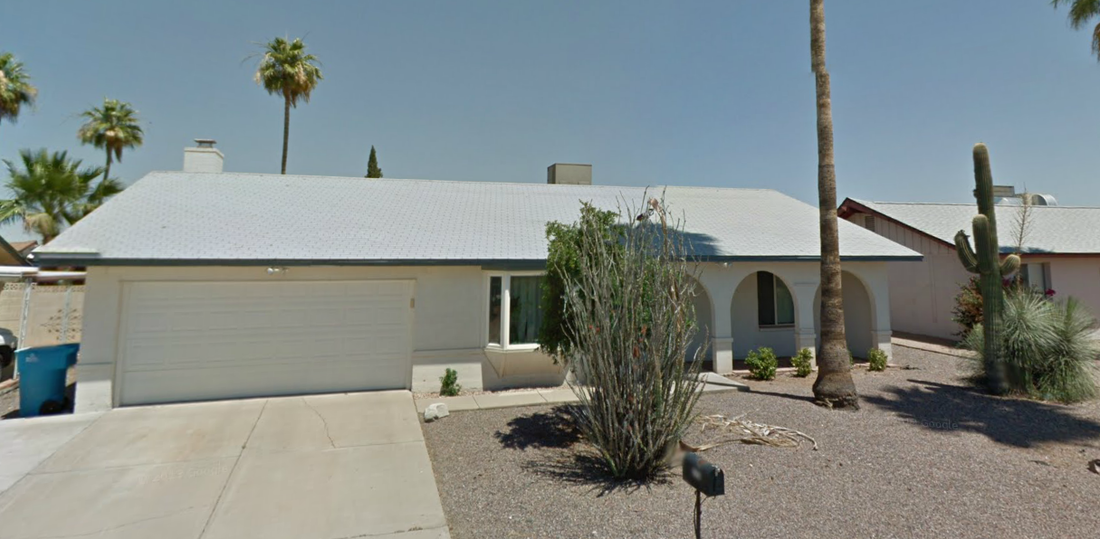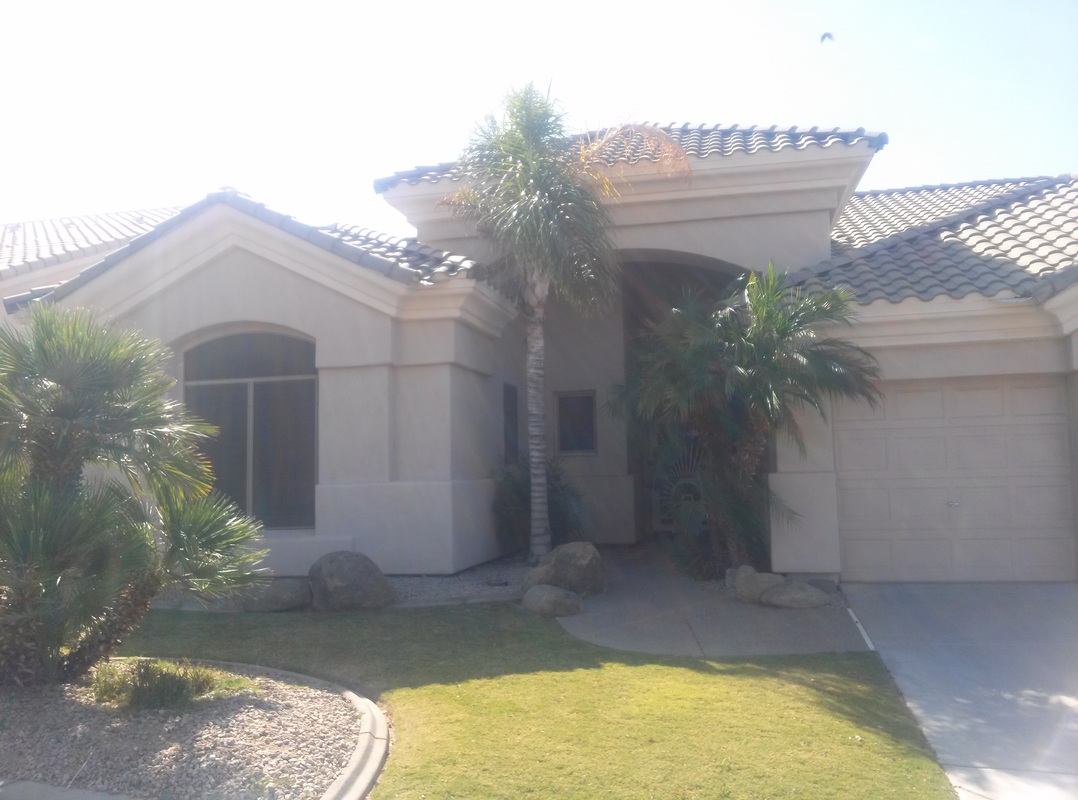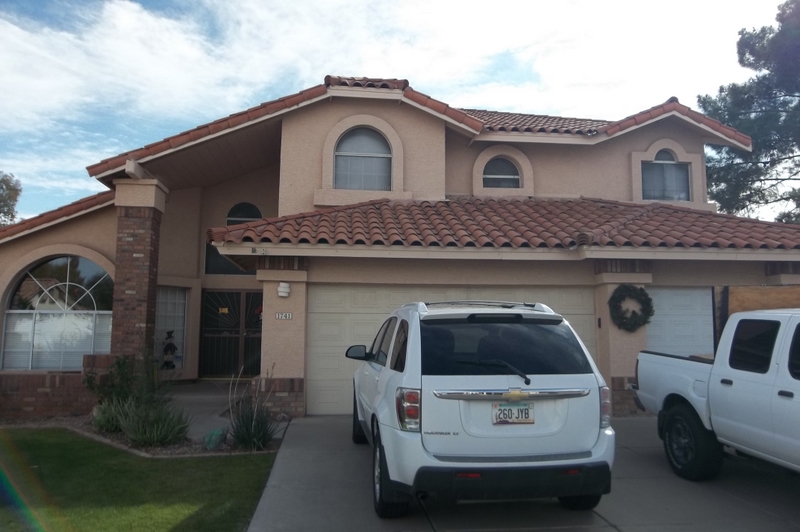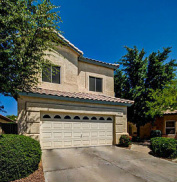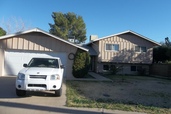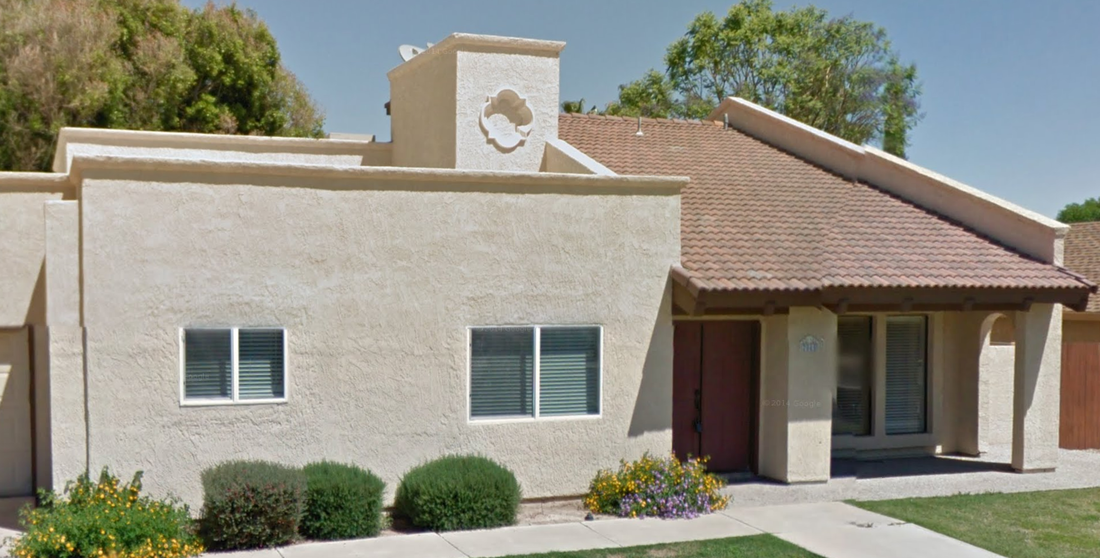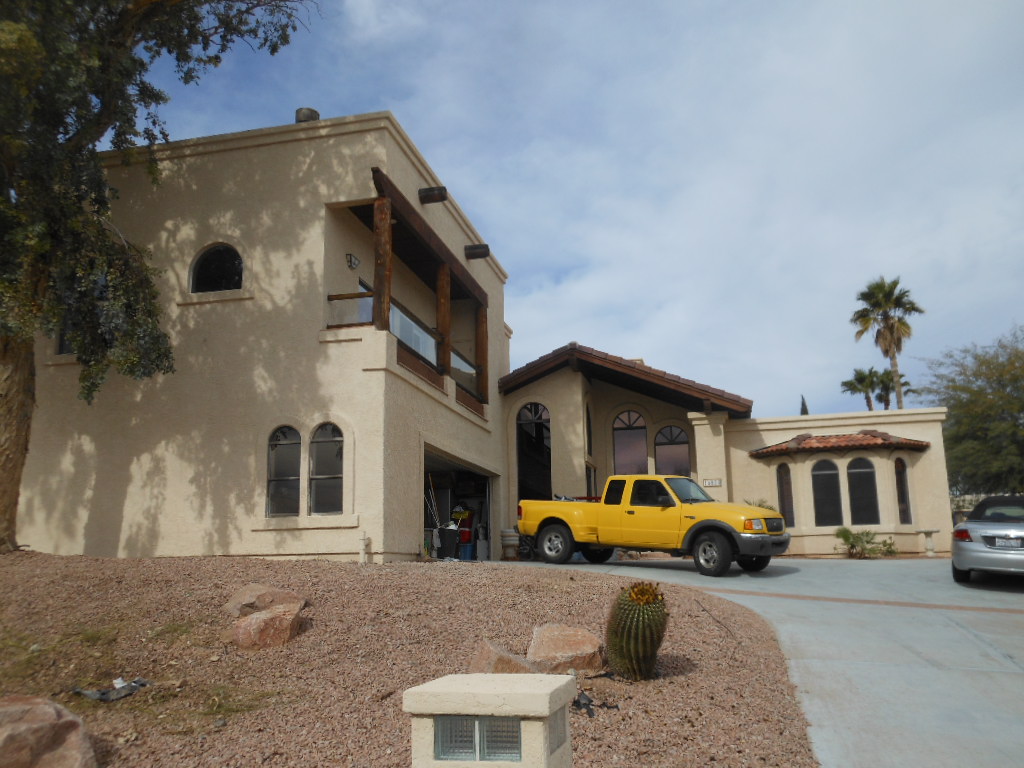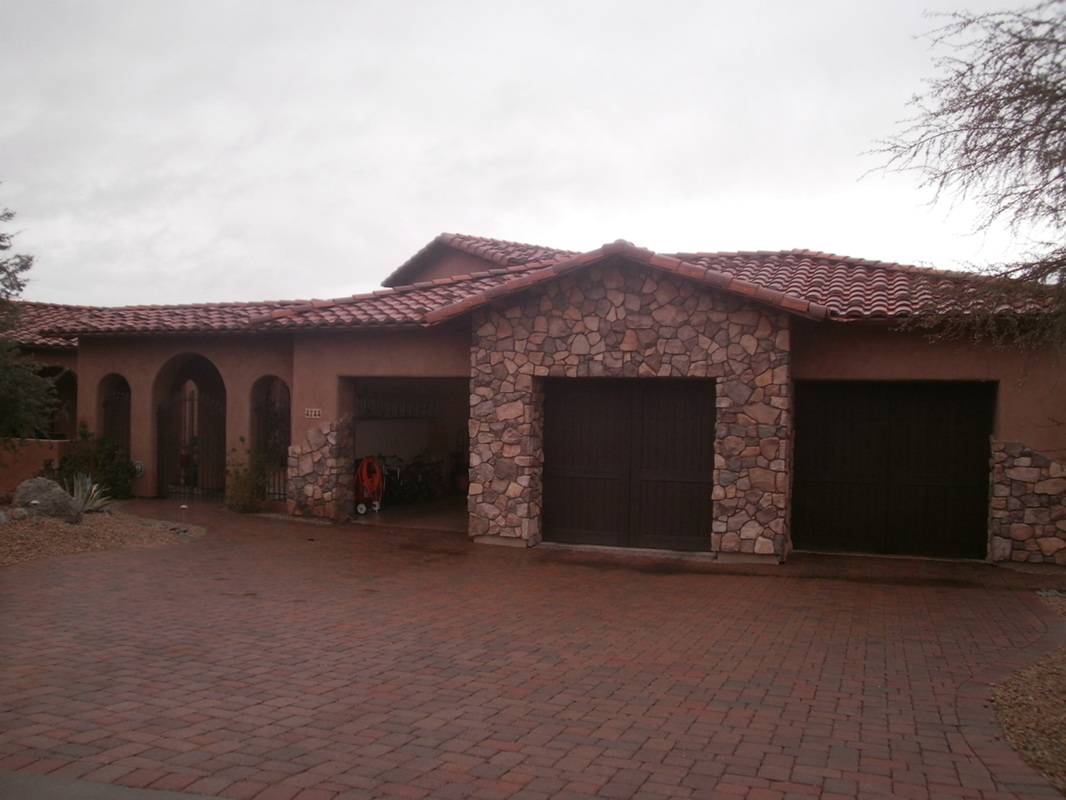|
In Phoenix, air conditioning accounts for about 60% of your home’s electricity costs. In some cases during the summer, energy bills will double because of the A/C use. To combat these outrageous energy prices, most Phoenix homeowners will switch to the APS and SRP time of use plan. On this plan most will only do laundry at night and will set the thermostat up during the day. Here are seven ways you can save on A/C costs without spending thousands of dollars upgrading your A/C unit to a high efficiency unit.
Leave Your Doors Open Your interior doors of course! Phoenix air conditioning companies have spread a lot of false information out there about closing your vents and doors. You want all the interior doors open or at least cracked to help circulate air back to the return. If you notice the doors close by themselves when the heat or air conditioning comes on or dust streaks around the door trim that is a sign the air is getting trapped inside the room when the doors are closed. Why is closing your interiors a bad thing to do? The air gets traps inside the room, and like blowing air into a bottle, you can't force any more air in until you let some out. It can be like putting a blocker in the ductwork that the airflow cannot get past. This makes the room uncomfortable and it makes the heating and AC system work a lot harder trying to overcome the build up pressure in the ductwork. It's a good idea to install a jump duct passive return or an active return in each room to help circulate the air out. If you leave your interior doors open, the air will circulate out on it's own but we say you can never have enough returns. Seal the Ductwork Around Phoenix, most homes are losing between 20% and 30% of their conditioned air in their attic. If 60% of your energy bill is coming from your use of A/C in the summer and 20% of your conditioned air isn’t making in to the actual rooms then you can see how that can add up to quite a bit- especially over 5 or 10 years! Some HVAC contractors don’t seal the ductwork on new, high efficiency air conditioners which is like driving a Prius with a hole in the gas tank. Sealing your HVAC ductwork not only saves money on your heating and cooling bills, it brings less dust in the home too. Air Seal Your Home Sealing your home, especially around exterior doors, electrical and plumbing penetrations, and exhaust fans will keep your conditioned air inside and the outside air outside. Chances are, when your house was built, subcontractors ran wires and plumbing vents through holes in the wall that are much bigger than the wires themselves. That extra space around the wires can let your expensive, air-conditioned air leak outside—and invite hot, summer air inside. This leads to heat gain quickly and makes your A/C unit work harder and more often. Install Shade Screens Shade screens block up to 90% of the sun’s conductive heat while still allowing sunlight in. Windows account from more than half of your homes heat gain because they have no insulation value and are (obviously) transparent. If you’ve been holding back on shade screens because you don’t like the way they look, shop around! There are a lot of discrete designs that are coming out. Or, take them off in the winter! Shade screens are typically clipped onto the frame and can be very easily removed after the summer is over. Increase Your Insulation’s R-value Are you even surprised that Phoenix attics get really hot during the summer? The temperature difference between the attic and the house can be a major contributor to high A/C costs. Having the insulation up to R-38 can protect your home from taking on the heat from your attic and make sure it’s not taking a toll on your bill. Make Sure There’s No Connection Between Your Garage and Your House This is one of the lesser known causes of high energy bills and is surprisingly common in houses in Glendale, Tempe, Scottsdale and Gilbert. Like the attic, the garage gets very hot during the summer. Temperature differences are one of the main drivers of heat gain and having a direct connection to that is like filling a pool with a slash in the liner. While running a blower door test our energy auditors can test and find connections from the garage to the house and let you know if it's worth sealing. If you have an attic hatch in the garage, the changes of having a connection greatly increase in our experience. Sometimes we can see right into the bathroom walls and floor cavity! The difference can be night and day when this is fixed... it pains me just thinking about the waste! Annual A/C Unit Tune Up The most important aspect to this tip is that the tune ups are done by a trusted, experienced, and reliable contractor. I personally know that finding a reliable HVAC contractor can be difficult. Just because your friend is in the air conditioning business does not necessarily mean that they will do a good job. I have been in too many homes where an AC contractor and friend installed a new unit and cut way too many corners simply because that’s the way they’ve been doing it for the last 20 years. After that’s done, fixing any of their work is much more difficult. Here’s an easy test that you can do yourself to see if you’re paying too much for your A/C. With the A/C on, close a bedroom door. Place your hand under the door to see if you can feel air coming out of the room. If you feel air coming out then your room pressures are unbalanced and you are probably paying too much for your A/C. Have an APS or SRP Home Energy Auditor do a home performance assessment to actually measure the pressure in each room to determine if correction is needed. Following these tips are a great first step to lowering your bills and taking control of your A/C use. For other ways to save money on your utility bills, be sure to check out our past articles and get up to speed on APS and SRP energy audits for your home. Feel free to call Green ID for more information or schedule your energy audit.
0 Comments
Do you have problems with sickness, allergies, and asthma in your home?
Are you looking for a way to breathe easy and feel better without medication? We have the solution: Air seal your home! We liken air sealing to getting a flu shot – it protects your health and saves you money in the long run. Air that leaks through your home’s envelope not only wastes energy and increases costs, but creates an unhealthy (and potentially unsafe) environment for you and your family. Air leakage occurs when outside air enters and conditioned air leaves uncontrollably through cracks and openings. This results in poor indoor air quality and moisture problems, both of which can affect the health of the occupants. In addition, sealing air leaks reduces outside noise; causes less pollen, dust, insects, and pests to enter the house; and controls humidity – all of which will improve your health in your home. Fumes from household and garden chemicals, insulation particles, and dust can enter your duct system, aggravating asthma and allergy problems. Sealing ducts can help improve indoor air quality by reducing the amount of pollutants entering ducts and circulating through your home. During normal operation, gas appliances such as water heaters, clothes dryers, and furnaces release combustion gases (like carbon monoxide) through their ventilation systems. Leaky ductwork in your heating and cooling system may cause “backdrafting,” where these gases are drawn back into the living space, rather than expelled to the outdoors. Sealing leaks can minimize this risk. In addition to the health aspect, leaky ducts can reduce heating and cooling system efficiency by as much as 20 percent. Sealing and insulating ducts increases efficiency, lowers your energy bills, and can often pay for itself in energy savings. Plus, if you’re planning to install new heating and cooling equipment, a well-designed and sealed duct system may allow you to downsize to a smaller, less costly heating and cooling system that will provide better dehumidification. For more information about how you can live healthier in your home, be more comfortable, and save money, contact Green ID at (602) 926-1650 today. Ask us how you can get started with air sealing – the flu shot for your home. Protect yourself and your family! Have you wondered what are the common recommendations energy auditors give are? All houses are different, but throughout the Phoenix homes there are similar construction techniques and practices that are used on the majority of homes. These Arizona-frequent practices could be the cause of your high energy bills, temperature differences within rooms, and poor indoor air quality. Through many years of experience, the energy auditors at Green ID have found that fixing these construction flaws can improve your quality of life through lower utility bills, better air quality, and consistent air temperature from room to room. Here is a list of what an energy audit includes. We will go into detail about what our auditors have found to be the most common home efficiency recommendations around Phoenix.
1. Seal the Ducts SRP estimates that the typical Phoenix home loses 20% of its air-conditioned air through faulty ducts. Some installers will take shortcuts when it comes the dealing duct leaks but ENERGY STAR tells us that a duct system that is properly sealed can save up to 25% of heating and air conditioning costs. We use a blower door test to pressurize the ductwork and measure the duct leakage on every register to get accurate readings to tell if there is leakage and how much. A leaky duct system can be solved with a mastic duct sealant or Aeroseal. 2. Air-seal the House Chances are, when your house was built, the builder ran wires and plumbing plates through holes in the wall that are much bigger than the wires themselves. That extra space around the wires can let your expensive, air-conditioned indoor air leak outside—and invite hot, summer air inside. This leads to heat gain quickly. With the same blower door test out energy auditors can tell where the air is leaking from and how much is coming into the house. 3. Add Insulation or Fix Improperly Placed Insulation In hot climates, having a well-insulated attic is crucial. This means insulation should have an “R” value (efficiency rating) of at least 38 or higher. Some homes in Arizona don’t have any attic insulation at all or have attics with insulation where it’s improperly installed. For example in Laveen, many builders went bankrupted, cut corners and it's common that our energy auditors find insulation completely missing above rooms. In other homes, just the age of the home warrants adding more insulation because the building codes for insulation have increased so much in the past 30 years alone. Some homes have zero insulation in the walls and insulation that has settled so much you can see the attic floor trusses. If your attic has fiberglass batt insulation, beware... the Pink Panther is not your friend here. 4. Shade Your Windows Windows are one of the things that are most to blame for heat entering your home. Help keep this heat out by closing curtains on the sunny side of your home or adding shade screens to your windows. According to the Electric League of Arizona, shade screens can reduce heat from the sun by about 50%. In hot dry climates like Arizona, Los Angeles, Texas and Florida, windows are the number one source of heat gain in homes. 5. Fix Airflow Problems In Arizona, ductwork has not been HVAC contractors specialty. In fact, it's probably one of the worst installation aspects of the installing AC contractors. Bad duct design, undersized and oversized ductwork and improper air balancing are all too common mistakes that have yet to be fixed even on new homes in Arizona. An energy audit will inspect the ductwork layout, sizes and design determine deficiencies that could be easily overlooked. Other Recommendations Upgrade Lights and Appliances Incandescent light bulbs add heat to your home and use far more electricity. Swapping them out for CFLs or LEDs can significantly reduce your energy use and has one of the fastest payback times of any energy improvement you can make. In fact, Home Depot and Lowes sell self-contained LED lights, which provide much needed air sealing of notoriously leaky recessed canned lights. Get a home energy audit to get an in depth view of how your home is using energy. Homeowners won’t know which energy improvement projects are the most cost-effective if they don’t know how well or poorly their home uses energy. Home energy audits help pinpoint energy leaks and malfunctioning systems, and provide cost-benefit analyses for various energy-saving fixes. This service can find up to 35% in energy bill savings. If you have noisy ductwork whenever it gets windy outside, or your home gets dusty during the Monsoon season, these tips from your Phoenix based energy auditor can help. Monsoon season has started up in Arizona. The severity of monsoon season can be hard to predict, so that blazing 120-degree weather can morph into a rainstorm in a matter of a few weeks or days.
As with all major storms, it’s best to plan ahead and prepare for any possible outcomes or damage caused. A storm can cause a minor issue to be exacerbated into something that causes huge amounts of damage and money to fix in mere seconds. So it’s better to make sure that you’re ready beforehand. Firstly, go out into your yard and have a look around. It’s better to prevent damage from happening in the first place than to fix it after the fact, so make sure that your HVAC is on high ground and away from any possible falling debris and that the grading is sloped away from your house, not towards. Trim any trees or bushes that need trimming and take inside anything that could easily be picked up or thrown around by wind. After the storm, look again and see if it needs to be cleaned off. Also make sure your ductwork is sealed so that any extra dust doesn’t get pulled into the house through leaks. If you have an evaporative cooler them wrapping it in a protective cover can prevent some of that dust from entering in your ductwork. You might also want to make sure your house is free of leaks. It gets extra dusty during monsoon season, so you want to make sure there’s no way that all that dust is being sucked into your house. This might be a good time for an energy audit, so that you can learn if your house has any leaks or inefficiencies that will cause headaches for you later on. Next, check your air filter. With the extra dust being kicked up by the monsoon winds, your filter will start to get clogged significantly faster. If you normally check and change your filters every 1-3 months, start looking at it every 2-3 weeks during monsoon season. Lastly, prepare for a possible power outage. I know this is not a common occurrence, and if it does happen, I wouldn’t expect it to last very long, but it’s not the end of the world to prepare for it even if it never happens. You should of course have the basic necessities such as extra gallons of water, canned food, flashlights, candles, and a first aid kit. If a power outage happens, make sure your appliances are fully off to prevent a power surge or electrical circuit problems. We’ve discussed different types of insulation, and why you should get a home energy audit for energy efficient improvements, but what about ductwork? Simply put, a duct is the channel that carries cooled air from the air conditioning unit through your home, and also removes warm or stale air. Ducts for central air conditioning can also be used for heating and filtering systems. Let’s look at some of the different types of ducts needed for air conditioning. Sheet Metal Air DuctsThe most common type of rigid air duct is constructed of galvanized steel or aluminum. Aluminum in particular is relatively light and easy to install but needs to be thick enough to avoid getting crushed if someone walks on it. They may be round, rectangular, or in the form of a spiral oval. These are the types of ducts that you’ve see in movies – usually with an action hero crawling through them! Sheet metal air ducts are the most durable type of air duct construction, and because of their non-porous surface, are the least likely to have mold or biological growth. Fiberglass Lined Air DuctsSome sheet metal air ducts are lined with an external or internal fiberglass duct liner. Fiberglass lining is used to insulate air ducts from heat loss or to avoid condensation in cases where the supply air is very cold, or there is a high ambient humidity in the plenum. Fiberglass lining also provides sound attenuation, reducing the noise of the HVAC system. Because of the dampened sound benefit, this type of duct is common in office and commercial buildings. However, the fiberglass in these ducts can deteriorate and eventually release fiberglass particles into the air – which is a major health concern, especially with long-term exposure. Fiberglass lined ducts also have the potential to become contaminated with molds and bacteria. Fiberboard Air DuctsFiberboard air ducts are constructed with boards of compressed resin bonded inorganic glass fibers. They have a foil face on the outside that serves as the air barrier and water vapor retarder. The interior of fiberboard air duct is sealed to prevent fiberglass fibers from entering the air stream. Fiberboard air duct also provides acoustical and thermal benefits, and are typically the most inexpensive air duct systems to install. This type of duct is good for cooling and heating systems because it is well insulated by itself. However, it is not recommended for ventilation because it can become a breeding ground for mold and mildew in humid climates. Also, because the surface is rough, it can affect airflow and efficiency. Fiberboard ductwork is also convenient because it can be fabricated to any configuration in the field, which is helpful when the roof framing is blocking a typical installation. Flexible Air DuctsFlexible air ducts are constructed with a spring steel wire helix, encapsulated in a 2-ply, polymer plastic. Flexible air ducts are inexpensive, lightweight, and easy to install. It is important that the lengths of the flexible air ducts be kept as short as possible as the amount that they bend greatly effects system performance. Typically, flexible ducts are tube shaped and are the second least expensive type of ductwork. This type of ducting is best in tricky spaces where rigid ducts are just not possible to install, or used to attach non-flexible ductwork to an air supply outlet. Kinks, bends, and turns need to be minimized in installation, as these issues reduce air flow and could hamper the efficiency and effectiveness of the air conditioner. Flexible air ducts are the easiest type of ductwork to install, so easy in fact that almost anyone can install them... which also happens to be their downfall. Since "anyone" can install them, best practices go out the window and installers show little care to how the airflow will actually be in the home when they put 6 wye splits before a duct reaches the last room, a room with three exterior walls or a room sitting directly above the garage. Green ID installers assure that your ductwork is installed the right way, to provide the best energy efficient improvements for your home. Flexible ducts are also the worst type of ductwork for airflow. The inner liner ribs restrict airflow more than sheet metal ductwork, but not significantly. Flexible ducts are good for air quality because you are not breathing in fiberglass insulation-lined ductwork like the Fiber Air Ducts and they are mold and rust resistant unlike galvanized sheet metal ductwork. What’s the Best Choice for You?With so many decisions to make about the best ductwork for your home, you need an expert with experience to guide you through the process. You may be wondering if its time for your ductwork to be replaced. Green ID can help with your choice after performing a thorough and cost-effective Energy Audit. Schedule yours today!
During the summer, air conditioning can account for 50% or more of your total electric bill. Follow the tips and guidelines below to increase energy efficiency and save money.
Air Conditioners and Heat Pumps
Evaporative coolers
References http://www.savewithsrp.com/DIY/cooling.aspx http://www.greenintegrateddesign.com/should-you-close-your-bedroom-doors-at-night.html If you have an energy audit done for your house, feel free to give yourself a pat on the back. You just took the very first step to a more efficient and comfortable home.
But it's not over yet! You may have been given small verbal updates on the state of your house during the audit, but the true results don't come in until later. You should have a follow-up appointment scheduled soon after the initial audit, where you will be able to see your audit report in-depth and be able to ask questions about it. This is where you might receive a list of possible fixes for the found inefficiencies in your home. The next step is to make a plan! Write down what issues you want to prioritize, and what solutions you want to use on them. A good portion of the expected work might require professional touches. But don’t think you can’t do anything yourself. Some quick DIY fixes, along with the additional fixes your home might need, can have your AC running in tip-top shape even as the summer heat rages on outside. Most people think of their home as a place where they can escape the watery eyes, stuffy nose, and sneezing that follows them for the rest of the day due to their allergies. The truth is that your home harbors many of the allergens that you are trying to escape from. A recent nationwide survey found that over half of all Americans test positive for at least some allergens, and many of these are indoor allergies such as dust, mold, and pet dander.
|
Sign Up For Your Home Energy AuditFIND YOUR HOME TYPERanch HomesSingle Story, Spec HomesTwo Story, Spec HomesTri-Level HomesPre-1990 Custom HomePost-1990 Custom HomeDon't See Your Home? Find Your City Below!Archives
April 2024
Copyright Notice©2009 – 2023
All Rights Reserved |




